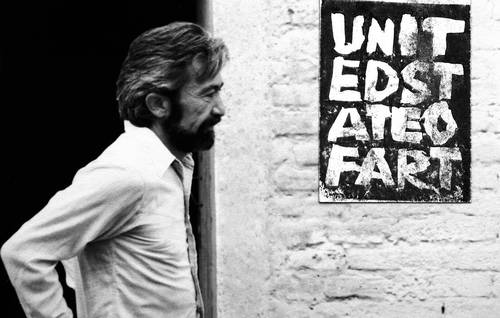A ritualist of performance and from the printing it is revealed in the book Marcos Kurtycz: Corporality to the limit, which is looking for provoke and wink
to those who explore its pages with the memory of a large number of images of his work, with a desire to make the work of the Polish artist survive in a broader sense, beyond the object, described the editor Sara Schulz.
Kurtycz (Poland, 1934-Mexico City, 1996) He is one of the most captivating artists of the conceptualist scene in Mexico.
. He made the body one of the means of expression, whether in a large number of artist books and in live actions.
In the text published by Fauna Libros, directed by Sara Schulz, it is stated that Kurtycz made hundreds of publications and printing actions that intertwine the machinist utopias of cybernetics with reflection on the body, its prostheses, vulnerability and eroticism.
.
He arrived in Mexico City in 1968 to abandon engineering and become a precursor of action art and a practice based on conceptualism. In his creative production he made reference to the atmosphere of censorship that he experienced during his childhood in his native post-war Poland, as well as the situation he encountered with the Tlatelolco massacre, and the difficult negotiation of creative freedom in contexts where the State is the main cultural engine
Mara Polgovsky points out in one of the essays.
He emphasizes that the Polish-Mexican is known mainly as an artist of performance, but it is a mutilated perception, because in his career the book came first, and once they crossed paths there was no breaking point.
In an interview, Schulz stated: I would dare to say that he was someone who was always on the margins, both conceptually and in the involvement of other people. Not because he was distant, but because he maintained a perspective that took what was happening out of the frame.
. The work on this book, which took several years, also involved pleasure in the editorial sense of getting to know Kurtycz’s work, which included being able to enter the archive, understanding how the pieces work, their implications and allusions. As an editor, I wanted to capture that same nuance in the book
.
He pointed out that a valuable aspect of the more than 400 pages is the safeguarding and gathering of the material, which includes photographs, testimonies and sequences. What we have is very complete. It is a special book because it manages to bring together all these aspects, it is not a catalog
. There cannot be a book so exhaustive with such a powerful trajectory, but it does provide appreciation of the work, I hope it is the framework for more research to be developed.
.
The book was born at the initiative of the historian and writer Mara Polgovsky, who did quite thorough and defined research in relation to the themes that interest her, or that she has worked on throughout her career, which places emphasis on the body, the politics of aesthetics, performativity and the notions of what alive and human, that is his approach to Kurtycz
.
The filmmaker also wrote three essays, including a critical dictionary that brings together some concepts about the artist’s work and his time.
For her part, Ana María García Kobeh, between her artistic and teaching activities, after Kurtycz’s death in 1996, dedicated herself to exploring the house she shared with the Polish artist for 17 years, to find the objects and documents of His work developed in Mexico, many times artifacts that were part of everyday life, other times forgotten in a room on the upper floor. Cardboard boxes became over time a dedicated and careful lesson in conservation. In the book she is the one who narrates these years, which constitute a work of rescue and mourning.
In his text he talks about the history of the archive and gives the reader very precise, elaborate descriptions of the pieces, where he tells from the materials that were used, what was said about the actions, what actions were carried out, where he went. It is a very valuable memory that the book also provides in relation to the work of Marcos
Schulz said.
The image gained ground
Accomplish Marcos Kurtycz: Corporality to the limit It was a long project and it changed a lot during its constitution process. At first it was planned as a book of essays with some images, then the works gained ground. In the final result, the photographs are the ones that appropriated the paper. From about 200 pages it grew to 450. So this growth was assumed because the selection of more works was precisely to capture, transmit what is revealed with the actions and rituals of printing
. A diagram was added with a combination of biographical data, a sketch of the work, with concepts and relationships between all of them.
It was a very careful process of an art book, in a bilingual edition in Spanish and English, designed by Priscila Vanneuville. It involved the sum of many sensitivities, collaborations and support. We work on each page with a lot of passion and hard
. When the pandemic seemed to sink the project due to the escalation of the price of paper, it was brought to light with the support of the Jumex Arte Contemporáneo Foundation, Patronato de Arte Contemporáneo and Ethra Gallery, as well as the Creation and Project Support System Cultural, through the Promotion of Cultural Projects and Co-investments 2022 aspect.
